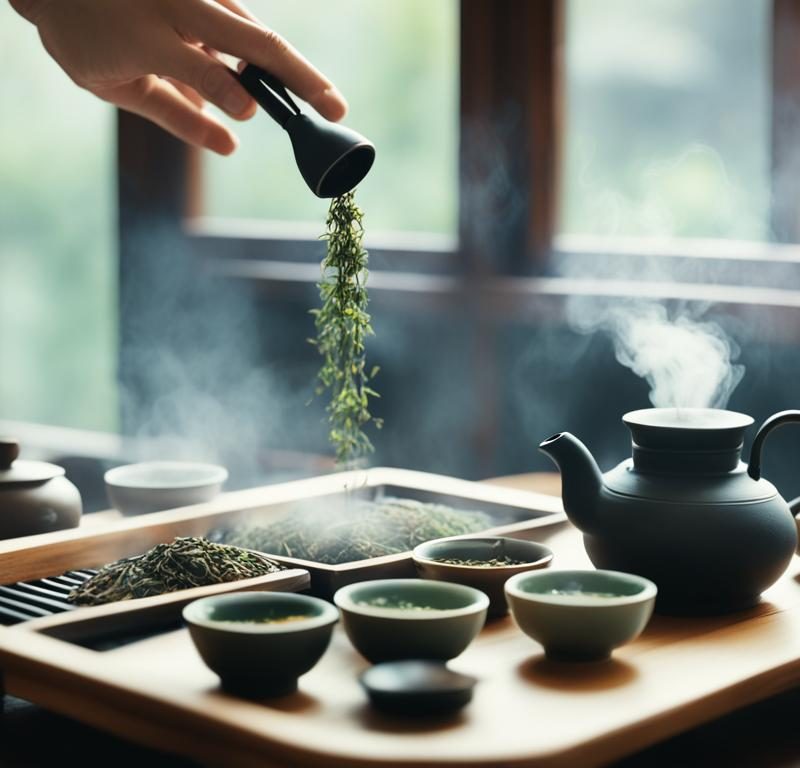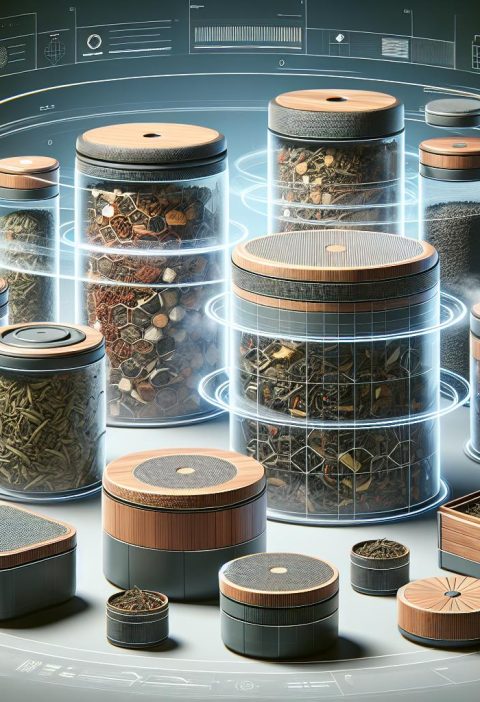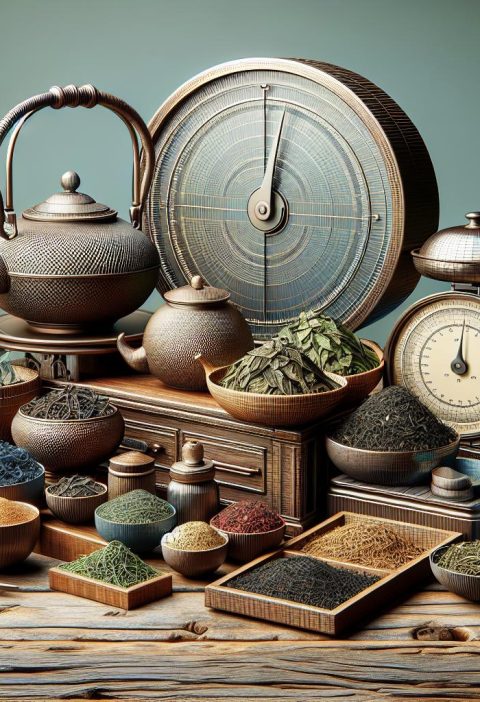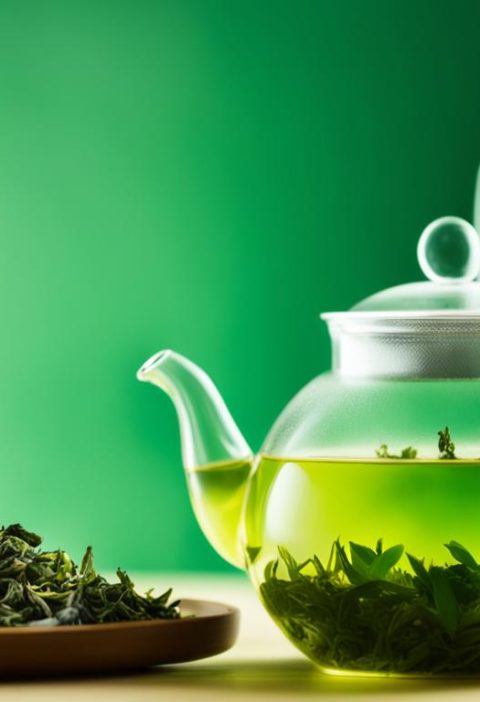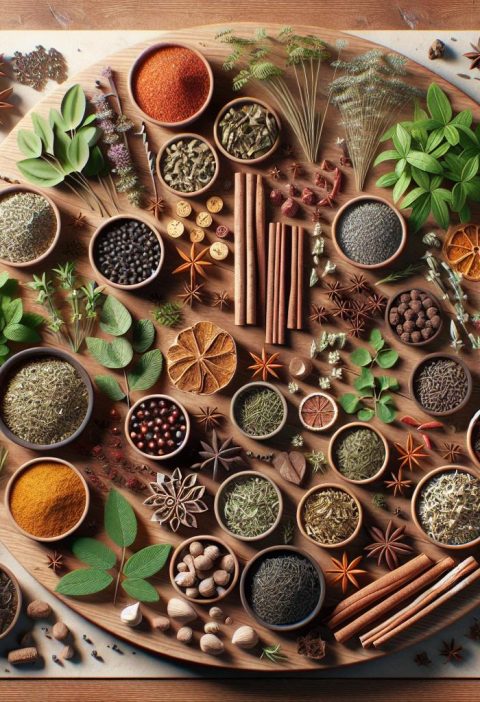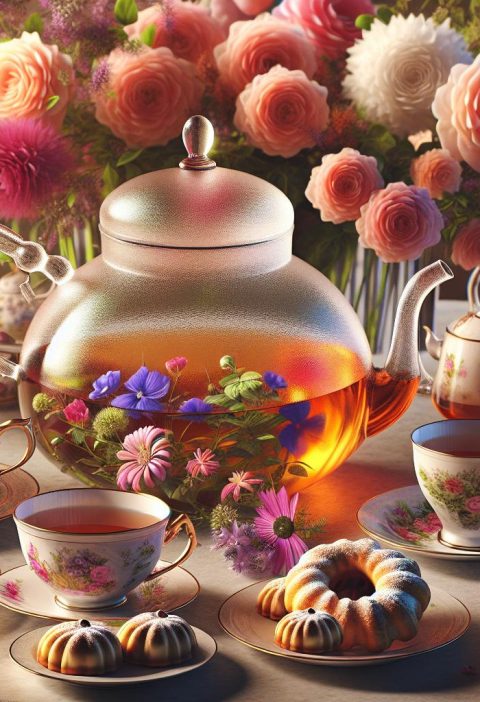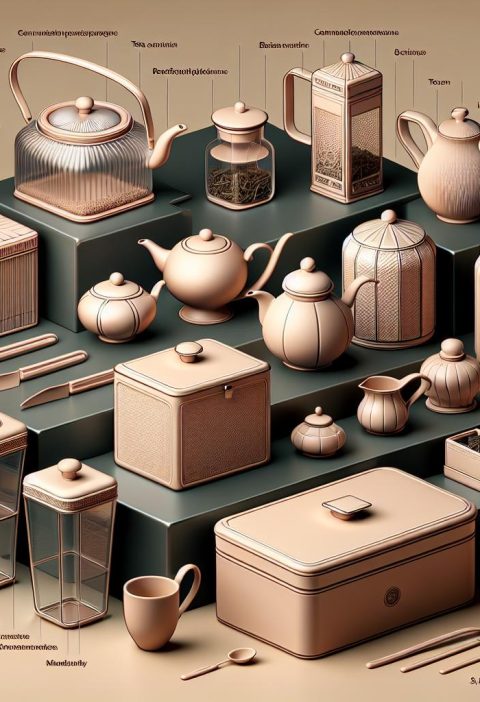When it comes to brewing loose leaf tea, there are various techniques that can elevate your tea experience. In this comprehensive guide, we will explore the best brewing methods and techniques to achieve the perfect cup of loose leaf tea. From gong fu cha to Western style brewing, boiling method, grandpa style, and cold brew, each technique offers unique flavors and experiences. We will also cover essential teaware, tea-to-water ratios, water temperature, steeping times, and tips for storing loose leaf tea properly. Get ready to unlock the secrets to brewing the best loose leaf tea!
Gong Fu Cha – The Traditional Chinese Tea Ceremony
Gong Fu Cha is a traditional Chinese tea ceremony that involves brewing concentrated amounts of tea leaves in small vessels for a short period of time. The name “Gong Fu Cha” translates to “making tea with skill,” highlighting the artistry and precision involved in this brewing method. It is a popular and widely practiced technique in Chinese tea culture. The tea leaves used in Gong Fu Cha are typically re-steeped multiple times, allowing for a gradual exploration of different tastes and aromas. This method requires specific teaware and offers a unique and immersive tea tasting experience. Gong Fu Cha is often recommended when trying a new tea for the first time, as it allows for a deep appreciation of the tea’s characteristics.
Key Takeaways:
- Gong Fu Cha is a traditional Chinese tea ceremony known for its artistry and precision.
- Tea leaves used in Gong Fu Cha are re-steeped multiple times for an exploration of flavors and aromas.
- This method requires specific teaware and offers an immersive tea tasting experience.
- It is recommended for trying new teas and appreciating their characteristics.
Gong Fu Cha – The Traditional Chinese Tea Ceremony
Gong Fu Cha is a traditional Chinese tea ceremony that has been practiced for centuries. It is a brewing method that showcases the skill and artistry of Chinese tea masters. This ceremony involves steeping and re-steeping small amounts of tea leaves in tiny teaware, allowing for a gradual exploration of flavors and aromas.
The name “Gong Fu Cha” translates to “making tea with skill” or “making tea with effort.” This highlights the precision and attention to detail required in this brewing technique. Gong Fu Cha is deeply rooted in Chinese tea culture and holds a significant place in the hearts of tea enthusiasts.
To perform Gong Fu Cha, specific teaware is used. This includes a small teapot, tea cups, a tea tray, and various tea utensils. The teapot and cups are often made of delicate materials such as clay or porcelain, which do not interfere with the taste or aroma of the tea.
The Gong Fu Cha ceremony offers a unique and immersive tasting experience. By using a higher tea-to-water ratio and short steeping times, the full potential of the tea leaves is revealed. The concentrated brew allows for a more nuanced and detailed exploration of the tea’s characteristics, including its flavor, aroma, and aftertaste.
Tea masters, who have dedicated years to mastering Gong Fu Cha, play a crucial role in preserving and passing on this ancient tradition. Their expertise in selecting the right tea leaves, controlling water temperature, and timing the steeps ensures a memorable tea experience.
Gong Fu Cha is often recommended when trying a new tea for the first time. It allows tea enthusiasts to fully appreciate the tea’s unique qualities and discover its depth of flavor. Whether you are a tea connoisseur or a curious beginner, Gong Fu Cha offers a delightful journey into the world of Chinese tea.
Western Style – Easy and Convenient Brewing
When it comes to preparing loose leaf tea, the Western style brewing method offers a convenient and straightforward approach. Unlike the intricate Gong Fu Cha ceremony, this method simplifies the process, making it accessible for everyone. With just a teapot, tea utensils, and quality tea leaves, you can enjoy an aromatic and flavorful brew.
In Western style brewing, a single teapot is used to steep the tea leaves. This eliminates the need for multiple utensils, streamlining the preparation process. Whether you’re a tea enthusiast or a casual tea drinker, this method allows you to enjoy the rich flavors of loose leaf tea without any hassle.
Compared to tea bags, which often contain lower quality tea leaves, brewing loose leaf tea in a teapot allows for the leaves to expand fully. As a result, you’ll experience a more aromatic and flavorful brew. The loose leaves have more room to infuse their rich flavors and delicate aromas, creating a satisfying and enjoyable tea drinking experience.
Western style brewing is widely practiced in cafes and households, making it a popular choice for tea lovers around the world. It is often the first brewing method that people try when exploring loose leaf tea. Whether you’re short on time or prefer a simpler approach to tea preparation, the Western style is perfect for incorporating loose leaf tea into your daily routine.
Explore the versatility of Western style brewing and savor the delightful flavors of loose leaf tea.
Why Choose Western Style Brewing?
- Convenient and straightforward method
- Requires a single teapot, eliminating the need for multiple utensils
- Allows tea leaves to expand naturally, resulting in a more aromatic and flavorful brew
- Widely practiced in cafes and households
- Suits those who prefer a simpler approach to tea preparation
Grandpa Style – A Simple and Time-Effective Method
Grandpa style brewing is a popular and common brewing method that offers a simple and authentic tea experience. It involves brewing loose leaf tea directly in a cup, without the need for strainers or teabags. This casual and relaxed brewing method is often enjoyed by older citizens while relaxing or socializing with friends. The simplicity of grandpa style brewing makes it a convenient option for those who want a quick and hassle-free tea preparation.
To brew tea grandpa style, all you need is a cup, tea leaves, and hot water. Simply place the tea leaves directly into the cup and cover them with hot water. Allow the tea leaves to steep and release their flavors, and enjoy sipping the tea directly from the cup.
Grandpa style brewing is particularly suitable for white, yellow, and green teas, as these tea varieties do not require a high loose leaf ratio to achieve the desired taste. The method allows you to enjoy the natural flavors and aromas of the tea without any additional filtering or steeping equipment.
This brewing technique not only offers convenience but also provides an authentic tea experience. It allows you to connect with the tea leaves and immerse yourself in the brewing process. Grandpa style brewing is a testament to the simplicity and beauty of tea, showcasing the essence of the tea leaves in every sip.
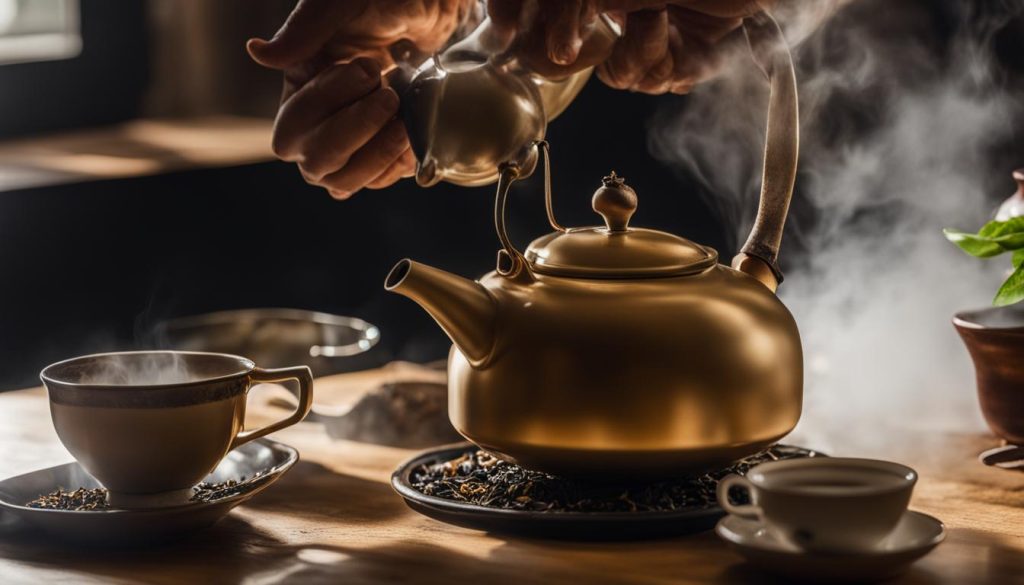
Boiling Method – An Ancient Tradition
The boiling method is the most ancient way of making tea, dating back to the Tang Dynasty. In this method, tea leaves are boiled for prolonged periods, often accompanied by various spices, herbs, and fruits. Traditionally, boiling ceremonies can last up to 3 hours, allowing the tea to gradually release its flavors and sweetness.
This method is commonly used for pu-erh tea, hei cha, certain oolongs, and aged white teas, as they can withstand boiling without becoming too astringent. However, it is not recommended for green and black teas, as they tend to become too bitter when boiled.
The boiling method offers a unique and time-intensive tea experience, resulting in exceptionally sweet and smooth teas.
Teas Suitable for the Boiling Method
- Pu-erh tea
- Hei cha
- Certain oolong teas
- Aged white teas
Cold Brew – Refreshing and Gentle Extraction
Cold brew is a refreshing and gentle method of preparing loose leaf tea. It involves pouring cold water over tea leaves and allowing them to steep in the refrigerator for several hours. Cold brewing requires patience, but the resulting brew is sweet, flavorful, and clean-tasting, with fewer bitter compounds called catechins. It also retains more antioxidants compared to hot water brewing methods. Cold brews tend to have less caffeine due to the lower extraction rate of caffeine in cold water. This method works particularly well with Japanese teas and is perfect for hot summer days. Although time-consuming, the resulting cold brew can be prepared in advance, providing a ready supply of flavorful cold tea.
Benefits of Cold Brew
- Cold brewing results in a sweet, flavorful, and clean-tasting brew.
- Retains more antioxidants compared to hot water brewing methods.
- Less caffeine due to the lower extraction rate in cold water.
- Perfect for enjoying Japanese teas and as a refreshing summer drink.
Cold Brewing Process
To prepare cold brew, follow these simple steps:
- Add loose leaf tea to a pitcher or glass container. Use approximately 1 tablespoon of tea per 8 ounces of water.
- Pour cold water over the tea leaves, ensuring they are fully submerged.
- Cover the container and place it in the refrigerator.
- Allow the tea to steep for at least 4-12 hours or overnight for a stronger flavor.
- Once steeped, strain the tea leaves and enjoy your cold brew over ice or as desired.
Cold Brew Recommendations
Cold brewing is particularly well-suited to certain types of tea:
| Tea Type | Recommended Steeping Time |
|---|---|
| Green tea | 4-6 hours |
| Oolong tea | 6-12 hours |
| Herbal tea | 4-8 hours |
Experiment with different tea types and steeping times to find your preferred flavor profile. Cold brews can also be enhanced with citrus slices, mint leaves, or other fruits to add additional flavor layers. Enjoy the refreshing and gentle extraction of cold brew tea, perfect for those hot summer days or anytime you crave a flavorful, chilled beverage.
Essential Teaware and Brewing Tools
To brew loose leaf tea properly, it is important to have the right teaware and brewing tools. These essential items enhance the tea brewing experience and allow you to fully appreciate the flavors and aromas of your favorite loose leaf tea.
Teapot or Teacup with Infuser
A teapot or teacup with a built-in infuser is a convenient and efficient way to brew loose leaf tea. The infuser allows the tea leaves to steep freely, releasing their flavors into the water. Opt for materials like glass, ceramic, or porcelain, as they do not retain any flavors or aromas from previous brews.
Biodegradable Filters
For those who prefer a more portable option or want to brew loose leaf tea on the go, biodegradable filters are a great choice. These filters are made from natural materials and provide a mess-free brewing experience. Simply fill the filter with tea leaves and place it in your cup or teapot.
Tea Kettle with Temperature Control
A high-quality tea kettle with temperature control is essential for consistent water temperature when brewing loose leaf tea. Different types of tea require specific water temperatures to achieve the optimal infusion. With a temperature-controlled kettle, you can easily adjust the water temperature to suit your tea of choice.
Measuring Spoon
Accurately measuring the right amount of tea leaves is crucial for a well-balanced and flavorful brew. A measuring spoon specifically designed for tea ensures consistent results every time. Use the measuring spoon to portion out the perfect amount of tea leaves for your preferred tea-to-water ratio.
Other Brewing Tools
Depending on your personal preferences, you may also consider additional brewing tools such as a glass teapot, ceramic teapot, or porcelain teapot. These teapots allow you to enjoy the visual beauty of the tea leaves unfurling and infusing the water. An electric kettle with temperature control offers convenience and precision in water temperature adjustment.
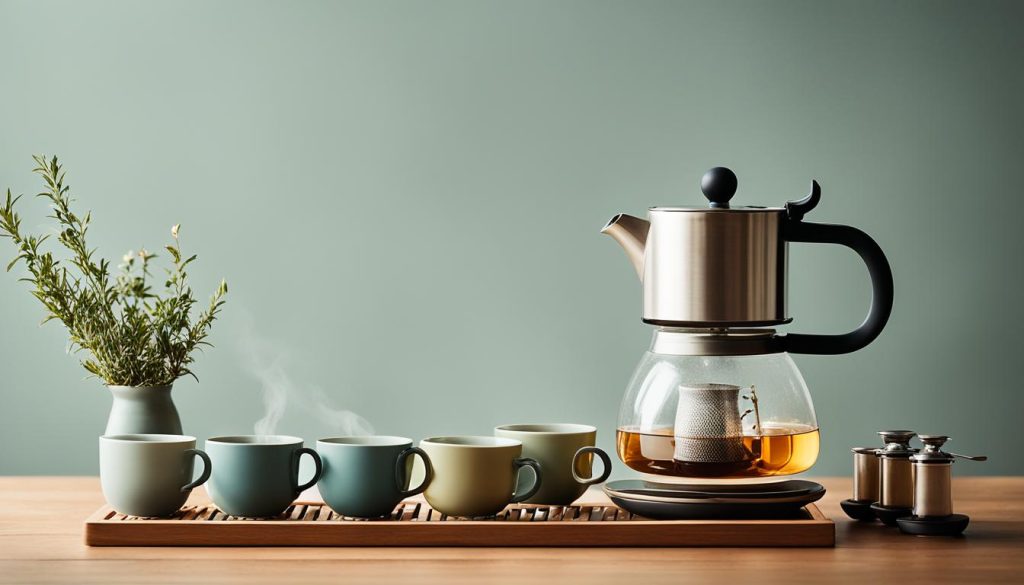
Invest in high-quality teaware and brewing tools to elevate your loose leaf tea brewing experience. These tools ensure precise measurements, optimal water temperature, and efficient infusion, allowing you to savor the flavors and aromas of your favorite tea to the fullest.
Mastering Tea-to-Water Ratio, Water Temperature, and Steeping Time
When it comes to brewing the perfect cup of loose leaf tea, understanding the tea-to-water ratio, water temperature, and steeping time is essential. These factors greatly influence the taste, aroma, and overall quality of your tea. Let’s delve into the details of each element:
Tea-to-Water Ratio
The tea-to-water ratio refers to the amount of loose leaf tea used per unit of water. While the general guideline is to use 1 teaspoon of tea for every 8 ounces of water, you can adjust this ratio based on your personal preferences. Some tea enthusiasts prefer a stronger brew and may use more tea leaves, while others prefer a milder flavor and may use fewer leaves.
Water Temperature
The water temperature plays a crucial role in the optimal extraction of flavors and aromas from different types of tea. Each tea variety has a specific temperature range at which it should be brewed to achieve the best results:
| Tea Type | Water Temperature |
|---|---|
| Green Tea | 165-185°F |
| White Tea | 175-185°F |
| Oolong Tea | 180-200°F |
| Black Tea | 200-212°F |
| Pu-erh Tea | 200-212°F |
By using the appropriate water temperature, you can enhance the unique characteristics of each tea type, ensuring a well-balanced and flavorful cup.
Steeping Time
The steeping time refers to the duration for which the tea leaves are left to infuse in hot water. It varies depending on the type of tea and can greatly impact the strength and taste of the brew. Here are some general guidelines for steeping loose leaf tea:
- Green Tea: 1-3 minutes
- White Tea: 3-5 minutes
- Oolong Tea: 3-7 minutes
- Black Tea: 3-5 minutes
- Pu-erh Tea: 5-7 minutes
It is essential to follow the recommended steeping times to avoid over-extraction or a weak, underwhelming brew. Experimenting with steeping times can help you find the perfect balance and bring out the desired flavors and aromas in your tea.
By mastering the tea-to-water ratio, water temperature, and steeping time, you can achieve optimal brewing results for each tea type, ensuring a delightful tea-drinking experience with every cup.
Storing Loose Leaf Tea and Embracing Tea Exploration
Proper storage is essential for maintaining the freshness and quality of loose leaf tea. To preserve its flavors and aromas, it is recommended to store tea in an airtight container. This prevents exposure to external factors such as sunlight, heat, and moisture, which can degrade the tea over time. Ensure the container is kept in a cool and dry place, away from strong odors that can be absorbed by the tea leaves.
When stored correctly, most loose leaf teas can last for 1-2 years or even longer, depending on the variety. To ensure the tea remains fresh, it’s important to avoid exposure to sunlight and excessive heat, as they can accelerate the aging process and compromise the tea’s quality. By keeping the tea in an airtight container, you can protect it from external elements and extend its lifespan.
Moreover, tea brewing provides an opportunity for exploration and experimentation. Don’t hesitate to try different tea varieties and blends to discover your personal preferences. You can create your own unique blends by combining different teas and adding complementary ingredients, such as dried fruits or spices. Furthermore, delve into the rich traditions of tea ceremonies from around the world, which offer a beautiful way to appreciate the art and culture of tea.
Embrace the world of loose leaf tea and let your curiosity guide you on a journey of taste and discovery. Experiment with brewing techniques, explore an array of flavors, and immerse yourself in the rich heritage of traditional tea ceremonies. There’s no limit to the possibilities that loose leaf tea presents, so enjoy every sip and savor the enchanting experience.
